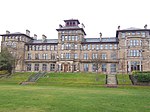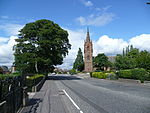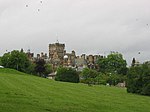Firrhill
Areas of EdinburghEdinburgh geography stubsUse British English from December 2016

Firrhill is a suburb of Edinburgh, the capital of Scotland. It is south of Merchants of Edinburgh Golf Club and lies next to Oxgangs. The area is mostly made up of public housing which was built by the Corporation Housing Department in the mid-1950s, however most of the council properties have now been bought by tenants using the right to buy scheme although a fairly large number of these are rented out privately by individual landlords.Firrhill High School lies in the area.
Excerpt from the Wikipedia article Firrhill (License: CC BY-SA 3.0, Authors, Images).Firrhill
Firrhill Crescent, City of Edinburgh Comiston
Geographical coordinates (GPS) Address Nearby Places Show on map
Geographical coordinates (GPS)
| Latitude | Longitude |
|---|---|
| N 55.913055555556 ° | E -3.2322222222222 ° |
Address
Firrhill Crescent 13
EH13 9EN City of Edinburgh, Comiston
Scotland, United Kingdom
Open on Google Maps








